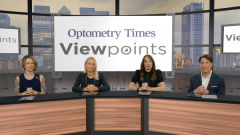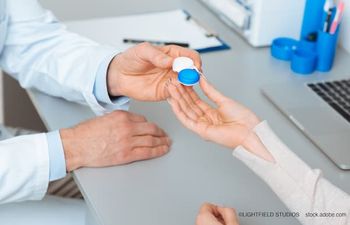
Treatment Selection in Dry Eye Disease
In this segment, the expert panel focuses on how they individualize dry eye disease treatment by interpreting symptom patterns, clinical findings, and patient-specific factors. They acknowledge that the expanding range of therapeutic options can feel overwhelming, but emphasize that effective care comes from methodically analyzing what each patient’s presentation reveals. The faculty explain that targeted questioning—such as whether symptoms are worse upon waking or later in the day—can differentiate between issues like poor lid seal, nocturnal exposure, or evaporative stress. They highlight the importance of performing a structured slit lamp examination, waiting the full two minutes after fluorescein instillation, assessing corneal and conjunctival staining, evaluating tear meniscus height, and observing eyelid mechanics. These findings guide decisions about anti-inflammatory therapy, anti-evaporative strategies, obstruction relief, or eyelid-focused interventions. The panel also stresses environmental and behavioral contributors, using real-world examples to educate patients and encourage active participation. Visual tools—including photos, videos, and simple imaging—help patients understand their condition and the chronic, multifactorial nature of dry eye disease.
In this segment, the expert panel focuses on how they individualize dry eye disease treatment by interpreting symptom patterns, clinical findings, and patient-specific factors. They acknowledge that the expanding range of therapeutic options can feel overwhelming, but emphasize that effective care comes from methodically analyzing what each patient’s presentation reveals. The faculty explain that targeted questioning—such as whether symptoms are worse upon waking or later in the day—can differentiate between issues like poor lid seal, nocturnal exposure, or evaporative stress.
They highlight the importance of performing a structured slit lamp examination, waiting the full two minutes after fluorescein instillation, assessing corneal and conjunctival staining, evaluating tear meniscus height, and observing eyelid mechanics. These findings guide decisions about anti-inflammatory therapy, anti-evaporative strategies, obstruction relief, or eyelid-focused interventions.
The panel also stresses environmental and behavioral contributors, using real-world examples to educate patients and encourage active participation. Visual tools—including photos, videos, and simple imaging—help patients understand their condition and the chronic, multifactorial nature of dry eye disease.
Newsletter
Want more insights like this? Subscribe to Optometry Times and get clinical pearls and practice tips delivered straight to your inbox.


















































.png)


